When thinking about business in downtown Dayton, you may picture legal and financial services, upstart tech firms, and perhaps all the jobs at the big players in healthcare and education.
But there are a wide variety of companies both large and small that have been operating from the greater downtown area for many years without much fanfare.
Today we’ll look at a business over a century old whose name is known and respected far beyond the Miami Valley.
The H. Gerstner & Sons factory and showroom is located just across the Great Miami River near Edwin C. Moses Boulevard and Washington Street.
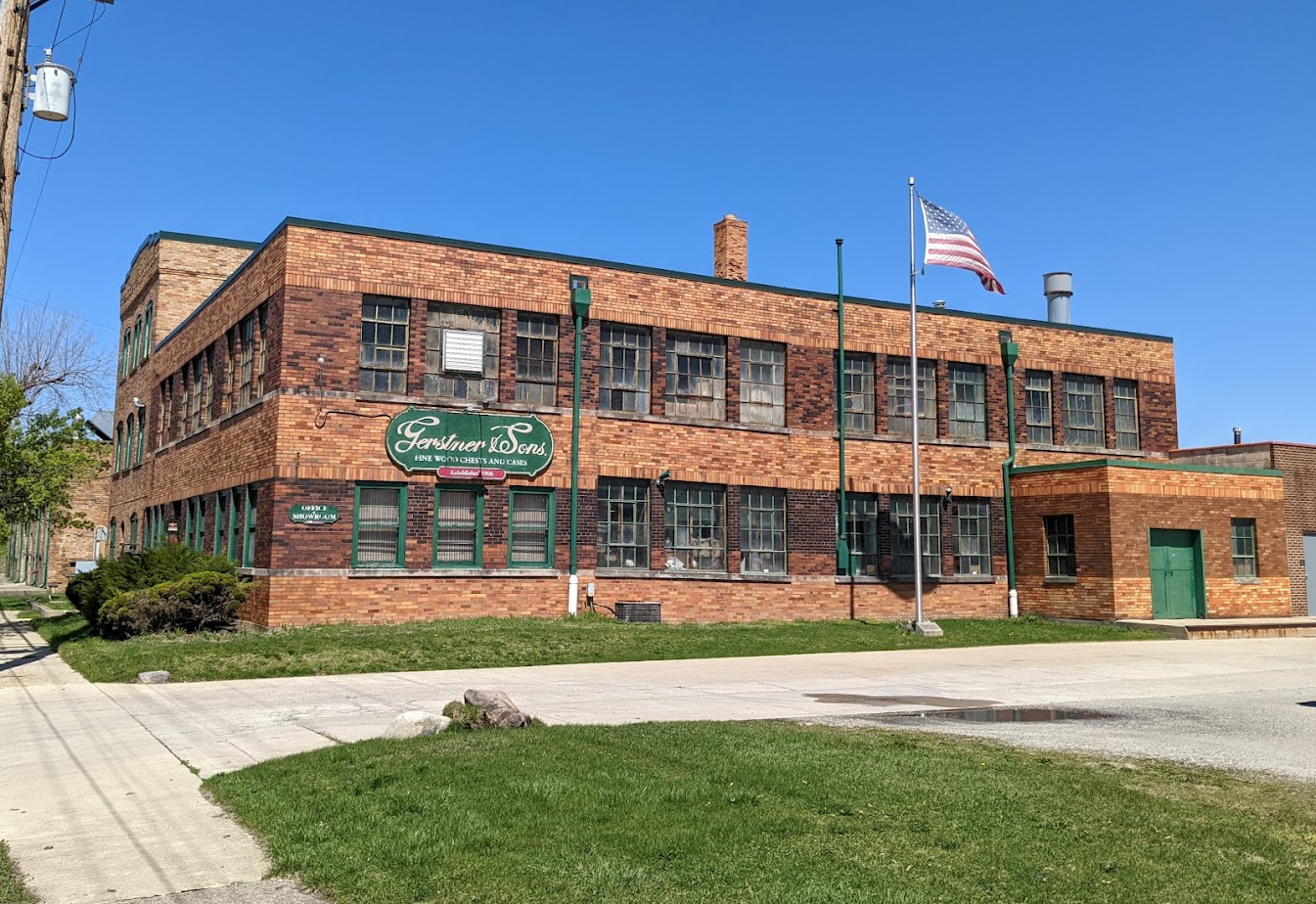
All the way back in 1906, Harry Gerstner sold his first handcrafted tool chest for $6.
At the time he was employed as a pattern-maker so it took him an entire year of working during the evenings to complete it.
Friends and colleagues were impressed by his creation and expressed interest in having one of their own, which gave Harry an idea. He took a $100 bonus from work and launched his own tool chest company.
The name H. Gerstner & Sons was, interestingly, chosen early on when it was only Harry running it.
He selected the name to honor his father Herman who introduced him to woodworking, but also in hopes he would one day have his own sons to bring in to the business. He also thought that name made his company sound more established.
Gerstner’s first sales were made door to door to many of those friends and coworkers who had expressed interest. But the product’s quality and positive reputation soon made such labor-intensive sales unnecessary.
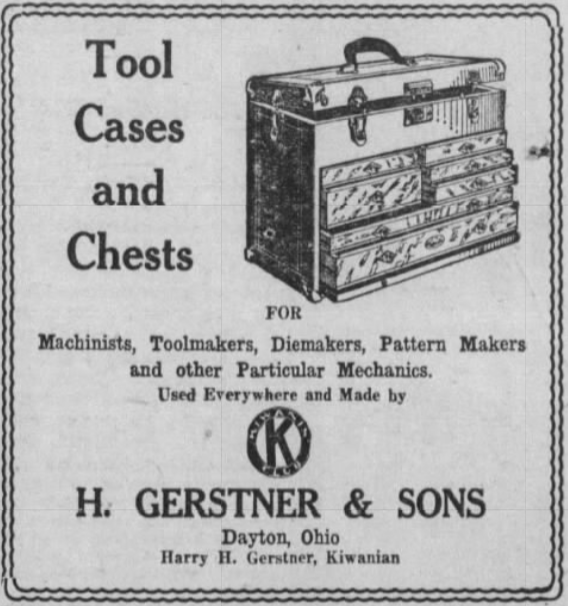
One prominent customer in the early years was Orville Wright whose Gerstner chest is today on display at Carillon Park.
Gerstner chests quickly gained a special reputation which began to spread both nationally and internationally in the ensuing years.
It’s been called the “Cadillac” of tool boxes and the company has been said to “exemplify the solid, hands-on workmanship of days gone by.”
A Gerstner chest is meant to last for decades and countless examples have been passed down from generation to generation.
Harry Gerstner himself remained company president until 1962. As of the mid-1970s, the plant had 55 employees and could produce 1,000 chests a year. Each took about six weeks to make it through a series of approximately 100 separate operations.
As of the 1980s, the company still tried to make the product obtainable for the general public. As Jack Campbell (president at the time and grandson of Harry Gerstner) put it: “My grandfather thought a week’s wage was a fair amount to charge for his product. Our prices are still pretty much in line with a weeks’ wage for one of our best tool chests.”
Today the company’s offers a number of varieties of chests and cases ranging in size, number of drawers, and the type of wood (including American Cherry, Black, Dark or Natural Walnut, Golden, Red or White Oak, or Rustic Hickory).
If all you’re picturing in these chests is a bunch of tools, there are quite a few other possibilities. According to one article, the chests “are ideal as jewelry chests, hobby chests or because of their unique styling they can be used as ideal accent pieces for home decor.”
One happy Gerstner customer profiled in a 2006 Dayton Daily News article even employed a Gerstner chest to protect her Cracker Jack toy collection.
History of Gerstner’s Site
Gerstner has been at its current location since 1913. In fact, the foundation had just been laid when the 1913 flood struck, burying it under 13 feet of water.
But the job was completed after the floodwaters receded, and the company would grow there up to the present day.
Here is the Gerstner site on a 1919 map:
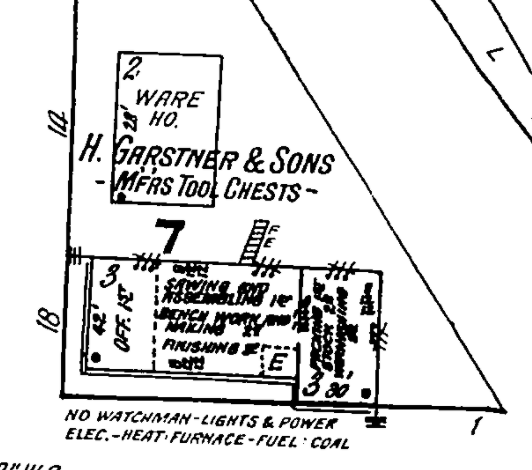
A two-story addition was built in the late 1930s. Here is how the Gerstner site looked in 1950.
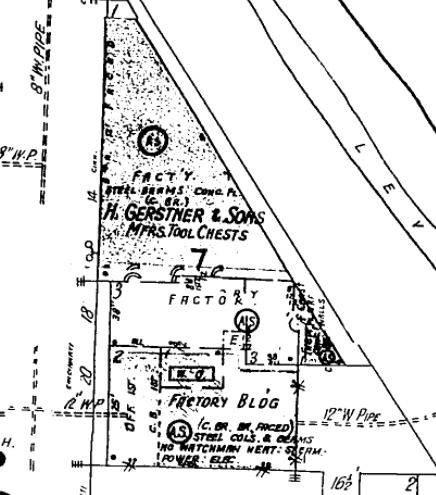
An image of the Gerstner plant today

The surrounding location of the Gerstner site itself also tells an interesting Dayton story since it was completely transformed by urban renewal.
Originally Gerstner’s address was 10/20 Cincinnati Street or simply Cincinnati and Columbia Streets.
The Aetna Paper Company mill was its neighbor, which later became the Howard Paper Mill and has been vacant land since the 1990s and is currently a brownfield site. There were also homes just across the street.
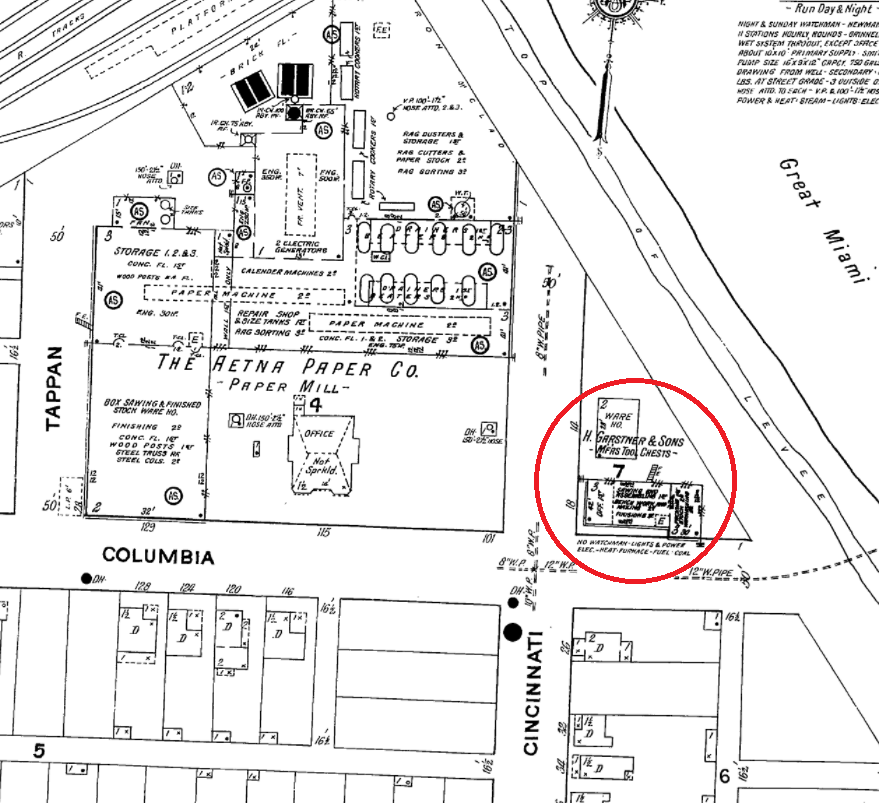
Today the street grid has been totally transformed and the site is also now surrounded by highways on two sides.
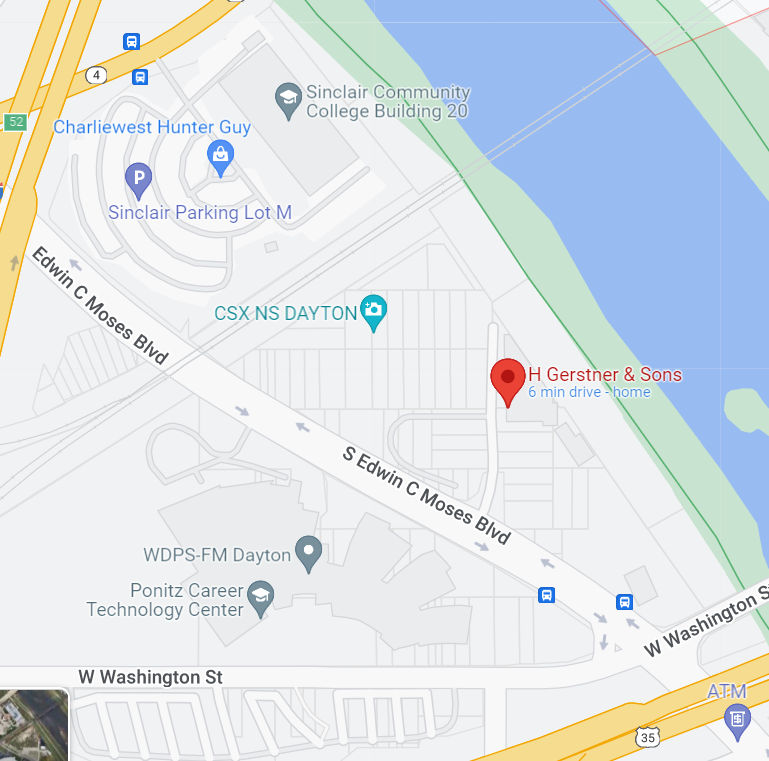
Sources:
https://gerstnerusa.com/company-history/
Dayton Daily News, Dayton Journal Herald Archives
Sanborn Maps
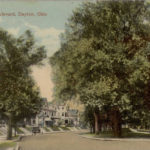
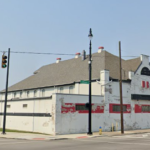
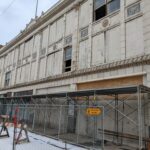
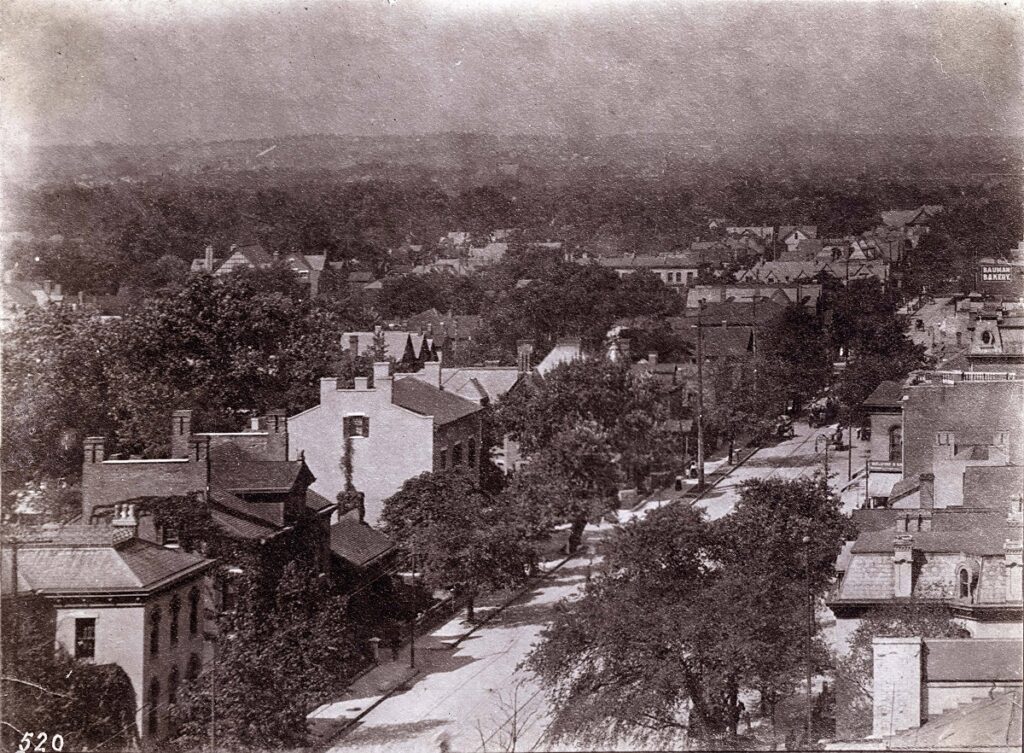
I took a photograph of the abandoned Howard Paper Mill in August of 2009. It was demolished a year or two later. Link to photo below:
https://www.flickr.com/photos/12633890@N07/3874327680/